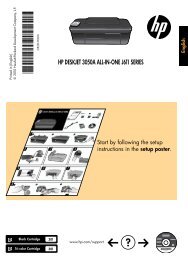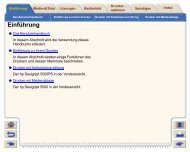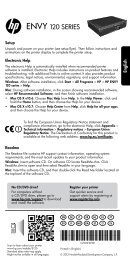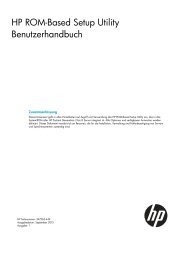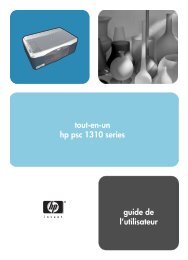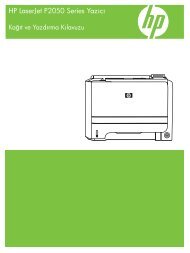HP Officejet Pro K550
HP Officejet Pro K550
HP Officejet Pro K550
You also want an ePaper? Increase the reach of your titles
YUMPU automatically turns print PDFs into web optimized ePapers that Google loves.
Network authentication: The printer’s factory default<br />
setting is ‘Open‘, which does not require security for<br />
authorization or encryption. The other possible values<br />
are ‘OpenThenShared’, ‘Shared’, and ‘WPA-PSK’<br />
(Wi-Fi ® <strong>Pro</strong>tected Access Pre-Shared Key).<br />
• WPA increases the level of over-the-air data<br />
protection and access control on existing and future<br />
Wi-Fi networks. It addresses all known weaknesses<br />
of WEP, the original native security mechanism in<br />
the 802.11 standard.<br />
• WPA2 is the second generation of WPA security;<br />
providing enterprise and consumer Wi-Fi users with<br />
a high level of assurance that only authorized users<br />
can access their wireless networks.<br />
Data encryption:<br />
• Wired Equivalent Privacy (WEP) provides security by<br />
encrypting data sent over radio waves from one<br />
wireless device to another wireless device.<br />
Devices on a WEP-enabled network use WEP keys to<br />
encode data. If your network uses WEP, you must<br />
know the WEP key(s) it uses.<br />
• WPA uses the Temporal Key Integrity <strong>Pro</strong>tocol (TKIP)<br />
for encryption and employs 802.1X authentication<br />
with one of the standard Extensible Authentication<br />
<strong>Pro</strong>tocol (EAP) types available today.<br />
• WPA2 provides a new, encryption scheme,<br />
the Advanced Encryption Standard (AES). AES is<br />
defined in counter cipher-block chaining mode<br />
(CCM) and supports the Independent Basic Service<br />
Set (IBSS) to enable security between client<br />
workstations operating in ad hoc mode.<br />
To set up the printer for wireless<br />
communication<br />
For Windows<br />
1. Remove the protective cover from the printer’s<br />
network connector.<br />
2. Do one of the following:<br />
• Temporarily connect the printer to the computer<br />
with the cross cable (included with the printer).<br />
• Temporarily connect the printer to an available<br />
port on the network hub, switch, or router with a<br />
network cable (sold separately).<br />
3. Close any applications that are running on your<br />
computer system.<br />
4. Insert the Starter CD into the CD drive.<br />
If the CD menu does not start automatically,<br />
double-click the setup icon on the Starter CD.<br />
5. On the CD menu, click Install and follow the<br />
onscreen instructions.<br />
6. On the Connection Type screen, select the option to<br />
connect through network and click Next.<br />
7. Follow the onscreen instructions to complete the<br />
installation, and when prompted, disconnect the<br />
cable.<br />
For Mac OS<br />
1. Open the AirPort Setup Assistant, and then follow<br />
the onscreen instructions for joining an existing<br />
wireless network (hpsetup).<br />
2. Double-click the setup icon on the Starter CD,<br />
and then follow the onscreen instructions.<br />
3. When prompted, click Open Print Center to add<br />
the printer.<br />
To set up wireless communication<br />
using SecureEasySetup (SES)<br />
If your wireless router is SES capable, see the following<br />
instructions to set up using SES.<br />
1. Press the SES button on the wireless router.<br />
2. Within 2 minutes, press and hold (Configuration<br />
Page button) on the printer, press (Resume<br />
button) once, and release (Configuration Page<br />
button).<br />
The Configuration Page light blinks.<br />
3. Wait for about 2 minutes, and press<br />
(Configuration Page button) to print the printer’s<br />
configuration page and verify that the SES settings<br />
match the router’s wireless settings.<br />
Note: If the connection fails, you might need to reset<br />
the printer’s network settings (see “Reset network<br />
configuration settings” on page 25) and repeat the<br />
steps. See also “Check the wireless<br />
communication settings” on page 24.<br />
English<br />
23








